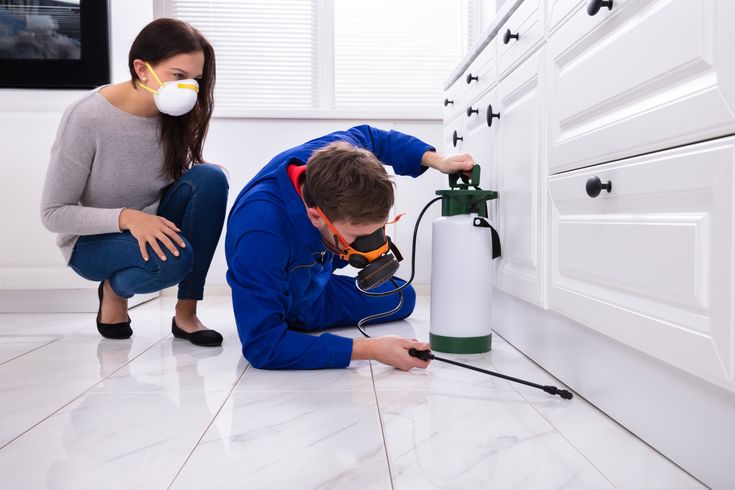As the digital landscape evolves, businesses in every industry, including pest control, must adapt their marketing strategies to stay competitive. One of the most effective ways to do this is through search engine optimization (SEO). By focusing on SEO, pest control companies can improve their online visibility, attract more customers, and ultimately grow their business. Pest control SEO services play a crucial role in enhancing a company’s online presence and attracting potential customers.
This guide will walk you through the most important aspects of SEO for pest control companies in 2025. We’ll cover the basics, provide tips, and discuss key trends to help your business stay ahead of the curve.
What is SEO, and Why Does It Matter for Pest Control?
SEO refers to the practice of optimizing your website and online presence to rank higher in search engine results pages (SERPs). When potential customers search for pest control services online, you want your business to appear at the top of those results. The higher your ranking, the more likely people are to click on your website and use your services.
For pest control companies, SEO is critical. According to recent studies, over 90% of people use search engines to find local services. If your business doesn’t show up in those search results, you’re missing out on a significant number of potential customers.
1. Optimizing for Local Search
Pest control businesses are inherently local. Most of your customers are looking for services near their location, so local SEO is essential. In 2025, local search optimization will become even more important as search engines like Google continue to refine their algorithms to provide users with hyper-local results.
Key Tips for Local SEO:
- Google My Business (GMB) Optimization: Your GMB profile is one of the most important factors in local SEO. Ensure your profile is up-to-date with your business name, address, phone number, hours of operation, and services. Add photos, respond to customer reviews, and regularly update posts to engage with your audience.
- Local Keywords: Use location-based keywords throughout your website, such as “pest control in [city name]” or “exterminators near me.” This helps search engines understand where your services are available and can improve your rankings in local searches.
- Local Listings and Directories: Ensure your business is listed in reputable online directories like Yelp, Angie’s List, and the Better Business Bureau. Consistency in your business name, address, and phone number (NAP) across these listings will improve your local SEO.
- Customer Reviews: Encourage satisfied customers to leave reviews on your GMB profile and other platforms. Positive reviews not only help with rankings but also build trust with potential clients.
2. Mobile Optimization for Pest Control Websites
In 2025, mobile optimization will be more important than ever. As mobile device usage continues to increase, search engines are prioritizing mobile-friendly websites in their rankings. This means your pest control website must be responsive and easy to use on smartphones and tablets. To further enhance your customer experience and engagement, you may also consider integrating AI-driven solutions like chatbots. Hire a top chatbot marketing agency to ensure that your website offers instant, personalized support to visitors, boosting both user satisfaction and conversion rates
Key Mobile Optimization Strategies:
- Responsive Design: Ensure your website automatically adjusts to fit any screen size. A mobile-friendly website improves the user experience and reduces bounce rates, which is a key factor in SEO.
- Fast Loading Speed: Mobile users expect websites to load quickly. Google uses page speed as a ranking factor, so optimizing your site for fast loading times will improve both user experience and SEO performance. Use tools like Google PageSpeed Insights to test and improve your site’s speed.
- Click-to-Call Buttons: Include easy-to-find call buttons that allow mobile users to contact your pest control company with a single tap. This not only makes it easier for potential customers to reach you, but it can also help improve your mobile rankings.
3. Keyword Research for Pest Control SEO
Effective keyword research is the foundation of any pest control SEO services strategy. Identifying the right keywords helps search engines understand what your business offers and ensures your website ranks for relevant queries. By targeting the right keywords, pest control companies can attract more qualified leads and improve their online visibility.
How to Conduct Keyword Research for Pest Control:
- Identify Relevant Terms: Start by brainstorming a list of keywords related to pest control services. Think about the problems your potential customers are looking to solve (e.g., “bed bug removal,” “termite control,” or “exterminator services”). Tools like Google Keyword Planner or Ahrefs can help you find search volumes and competition for these keywords.
- Long-Tail Keywords: Focus on long-tail keywords that are more specific and less competitive. For example, instead of targeting “pest control,” target “affordable pest control in [city].” Long-tail keywords can help you attract highly targeted traffic and increase your chances of conversion.
- Competitor Research: Analyze the keywords your competitors are ranking for. This can help you identify gaps in your own keyword strategy and uncover new opportunities to target.
4. On-Page SEO for Pest Control Websites
On-page SEO refers to the strategies you use on your website itself to improve its visibility and ranking. By optimizing your pages for both users and search engines, you can increase your chances of ranking higher in search results.
Key On-Page SEO Elements:
- Title Tags and Meta Descriptions: Each page of your website should have a unique title tag and meta description that includes relevant keywords. These elements help search engines understand the content of your page and encourage users to click on your link in the search results.
- Heading Tags (H1, H2, H3): Use heading tags to organize your content and make it easier to read. Ensure your main keyword appears in the H1 tag (the main title of the page), and use H2 and H3 tags for subheadings.
- Internal Linking: Link to other pages on your website to help search engines crawl and index your site more effectively. Internal links also guide users to other relevant content, improving user engagement.
- Alt Text for Images: Include descriptive alt text for all images on your website. This not only helps with SEO but also makes your site more accessible to people using screen readers.
5. Content Marketing and Blogging
In 2025, high-quality content will continue to be a key driver of SEO success. Regularly publishing valuable, informative content can help your website rank higher and attract more traffic.
How Content Marketing Can Benefit Pest Control SEO:
- Answer Common Customer Questions: Create blog posts or FAQs that address common questions or concerns that your potential customers may have, such as “How to get rid of ants in the kitchen” or “What are the signs of termite infestation?” This type of content can help you rank for long-tail keywords and establish your business as an authority in the pest control industry.
- Local Content: Write about topics relevant to your services area. For example, you could publish a blog post about seasonal pests in your city or how local weather conditions impact pest populations. This content can help you rank for location-based searches.
- Video Content: Consider adding video content to your site, such as tutorials on pest prevention or explanations of your services. Video content can increase engagement, time on site, and social sharing, all of which can have a positive impact on SEO.
6. Link Building for Pest Control SEO
Link building is the process of acquiring backlinks from other reputable websites. Backlinks are one of the most important ranking factors for search engines, as they indicate that your website is trustworthy and authoritative.
How to Build Quality Backlinks:
- Local Partnerships: Collaborate with local businesses, organizations, or influencers in your area to get backlinks. For example, you could sponsor a local event or write a guest blog post for a related business, like a home improvement company.
- Content Sharing: Create high-quality content that other websites will want to link to. Infographics, case studies, or in-depth guides are great examples of content that is often shared and linked to by other websites.
- Directory Listings: Submit your pest control business to industry-specific directories and local listings. These can provide valuable backlinks and help with local SEO.
7. Tracking and Analytics for SEO Success
To understand how well your SEO efforts are working, you need to regularly track and analyze your website’s performance. Tools like Google Analytics and Google Search Console provide valuable insights into your website traffic, keyword rankings, and user behavior.
Key Metrics to Track:
- Organic Traffic: Monitor the amount of traffic coming to your website from search engines. An increase in organic traffic indicates that your SEO efforts are paying off.
- Bounce Rate: A high bounce rate can indicate that users are leaving your site quickly. This may suggest that your site isn’t providing the information they’re looking for, so consider improving your content or user experience.
- Conversion Rate: Track how many website visitors are converting into leads or customers. This helps you measure the effectiveness of your website and content in driving sales.
Conclusion
SEO is a vital part of any pest control company’s marketing strategy in 2025. By focusing on local search optimization, mobile-friendliness, keyword research, content marketing, and link building, you can significantly improve your online visibility and attract more customers. Pest control SEO services can be an invaluable resource in this process, helping your business navigate the complexities of SEO while ensuring it stays competitive in an ever-changing digital environment. Remember, SEO is an ongoing process, and it takes time to see results, but the long-term benefits are well worth the effort.
By staying up-to-date with SEO best practices, your pest control business can continue to grow and succeed in the competitive digital landscape.




